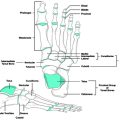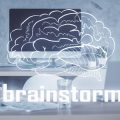1. Introduction to Cognitive Rehabilitation Therapy (CRT)
Cognitive Rehabilitation Therapy (CRT) is a specialized approach that helps people improve their thinking skills after injury, illness, or neurological changes. CRT focuses on functions like memory, attention, problem-solving, and organization—abilities that are essential for daily living. In occupational therapy practice, CRT supports clients in regaining independence and participating more fully in their everyday lives.
What Is Cognitive Rehabilitation Therapy?
CRT uses targeted exercises and strategies to help individuals strengthen cognitive skills or learn new ways to manage challenges. For example, someone recovering from a brain injury might work with an occupational therapist to remember appointments, organize tasks, or use technology to compensate for lost abilities.
The Role of CRT in Occupational Therapy
Occupational therapists play a key role in delivering CRT because they focus on helping people do what matters most to them—from getting dressed to returning to work. By blending cognitive strategies into real-life activities, occupational therapists make therapy meaningful and practical. This approach ensures that improvements made during sessions carry over into home, school, and community settings.
Why Is CRT Important in the U.S. Healthcare Setting?
In the United States, there is an increasing need for cognitive rehabilitation due to factors like aging populations, rising rates of stroke, traumatic brain injuries (TBI), and neurological conditions such as dementia and multiple sclerosis. With greater awareness of mental health and cognitive wellness, more Americans are seeking services that can help them live fuller lives despite cognitive changes.
Common Conditions Treated with CRT
| Condition | How CRT Helps |
|---|---|
| Traumatic Brain Injury (TBI) | Improves memory, attention, and executive function for daily tasks |
| Stroke | Restores problem-solving and organizational skills needed for independence |
| Dementia | Supports routines and compensates for memory loss |
| Multiple Sclerosis (MS) | Manages fatigue and enhances planning abilities |
| Mental Health Disorders | Builds coping strategies for managing symptoms at home or work |
2. Foundational Principles and Theoretical Approaches
Understanding the Core of Cognitive Rehabilitation Therapy (CRT)
Cognitive Rehabilitation Therapy (CRT) is a specialized area within occupational therapy that focuses on helping people regain cognitive functions after injuries, illnesses, or neurological conditions. In the United States, CRT is guided by evidence-based models and best practice guidelines, making it an essential part of many rehabilitation programs.
Key Theories Guiding CRT in Occupational Therapy
Several theories and models form the backbone of CRT, providing therapists with frameworks for assessment, goal-setting, and intervention. Understanding these can help both practitioners and clients see how CRT fits into daily life and recovery.
| Theory/Model | Main Focus | How It’s Used in Practice |
|---|---|---|
| Dynamic Interactional Model (Toglia) | How people process information and adapt to challenges | Therapists use this to teach strategies for real-life tasks, focusing on self-awareness and flexible thinking |
| Cognitive Disabilities Model (Allen) | Cognitive levels and their impact on function | Used to match activities to a person’s current abilities and gradually increase complexity as they improve |
| Person-Environment-Occupation (PEO) Model | The interaction between a person, their environment, and their occupations (meaningful activities) | Guides therapists to modify environments or tasks so clients can participate fully despite cognitive challenges |
| Task-Oriented Approach | Functional performance through purposeful activity | Focuses on practicing real-life tasks to promote recovery and independence |
Guiding Principles in American Rehabilitation Settings
Client-Centered Practice
In the U.S., CRT follows a client-centered approach—this means therapy is tailored to what matters most to the client. Therapists work together with clients and families to set meaningful goals that fit their lifestyle, culture, and needs.
Evidence-Based Intervention
American guidelines encourage using interventions supported by strong research evidence. This includes approaches like strategy training, errorless learning, metacognitive training, and environmental modifications.
Interdisciplinary Collaboration
CRT often involves teamwork. Occupational therapists coordinate with speech-language pathologists, neuropsychologists, physicians, and family members for holistic care.
Payer Guidelines and Documentation Requirements
Reimbursement from insurance companies in the U.S. requires detailed documentation that shows the medical necessity of CRT. Therapists need to show progress toward functional goals using standardized assessments like the Montreal Cognitive Assessment (MoCA), Mini-Mental State Examination (MMSE), or Functional Independence Measure (FIM).
The Importance of Functional Outcomes
The ultimate aim of CRT in occupational therapy is to improve participation in everyday life—whether it’s returning to work, managing home responsibilities, or engaging in community activities. All interventions are designed with this outcome in mind.
![]()
3. Core Assessment Methods in CRT
Cognitive Rehabilitation Therapy (CRT) is an essential part of occupational therapy for clients with cognitive impairments due to injury, illness, or developmental challenges. In the United States, occupational therapists use a variety of evidence-based assessment tools and culturally responsive techniques to evaluate and address clients’ unique needs. Understanding these core methods helps ensure that each client receives personalized care that fits their background and everyday life.
Evidence-Based Assessment Tools Commonly Used in U.S. Practice
Occupational therapists rely on standardized assessments to measure different areas of cognitive function. These tools help identify strengths and areas needing support. Here are some widely used options:
| Assessment Tool | Purpose | Typical Population |
|---|---|---|
| Montreal Cognitive Assessment (MoCA) | Screens for mild cognitive impairment | Adults, older adults |
| Mini-Mental State Examination (MMSE) | Evaluates orientation, memory, attention, and language | Adults, older adults |
| Cognitive Assessment of Minnesota (CAM) | Assesses a wide range of cognitive skills | Adults with brain injury or neurological conditions |
| Executive Function Performance Test (EFPT) | Measures executive functioning in daily tasks | Adults with stroke, traumatic brain injury, dementia |
| Rivermead Behavioural Memory Test (RBMT) | Assesses everyday memory problems | Youth, adults, older adults |
| Allen Cognitive Level Screen (ACLS) | Screens functional cognition through task performance | Youth, adults with psychiatric or neurological disorders |
Culturally Responsive Evaluation Techniques
Cultural factors can greatly influence how individuals experience and respond to cognitive changes. Occupational therapists in the U.S. incorporate culturally sensitive approaches by:
- Using interpreters or bilingual assessment materials: This ensures clear communication when English is not the client’s primary language.
- Considering cultural norms and daily routines: Therapists ask about family roles, work habits, and community activities to understand what is meaningful for each client.
- Selecting appropriate assessment tools: Some tools may be adapted or replaced if they do not fit the client’s cultural background or education level.
- Building rapport: Taking time to develop trust with clients and families leads to more accurate information and better outcomes.
Integrating Standardized Tools and Personalized Approaches
The most effective assessments combine standardized testing with interviews, observations, and input from families or caregivers. This holistic approach helps occupational therapists create treatment plans that address real-life challenges and build on each person’s strengths.
A Practical Example in U.S. Occupational Therapy Settings
An occupational therapist working with a Spanish-speaking older adult recovering from stroke might use the MoCA in Spanish, interview family members about daily routines at home, observe meal preparation skills in a clinic kitchen, and adapt recommendations based on the client’s cultural preferences around food and social activities. This blend of evidence-based assessment and cultural understanding supports meaningful progress during rehabilitation.
4. Intervention Strategies and Clinical Applications
Practical Intervention Strategies in Cognitive Rehabilitation Therapy
Occupational therapists (OTs) in the United States use a variety of evidence-based intervention strategies when providing cognitive rehabilitation therapy. These strategies are tailored to each individual’s unique needs, daily routines, and personal goals. Here are some commonly used approaches:
| Strategy | Description | Example in Practice |
|---|---|---|
| Task Analysis | Breaking down complex activities into smaller, manageable steps. | Teaching a client to prepare a simple meal by outlining each step separately. |
| Errorless Learning | Minimizing mistakes during skill acquisition to build confidence and memory retention. | Guiding a patient through a new task with prompts until they can complete it independently. |
| Compensatory Techniques | Using tools or adjustments to bypass cognitive challenges. | Introducing smartphone reminders for medication management. |
| Restorative Exercises | Activities designed to improve underlying cognitive skills such as attention, memory, or problem-solving. | Practicing memory games or puzzles tailored to the client’s level. |
| Environmental Modification | Adjusting the home or work environment to support function and independence. | Labeling cabinets or using color-coded calendars at home. |
Everyday Activities as Therapeutic Tools
In American occupational therapy practice, everyday tasks are often used as both assessment and intervention tools. The goal is to help clients regain skills that are meaningful and necessary for their daily lives. Some common examples include:
- Cooking: Practicing sequencing, safety awareness, and following directions while preparing meals.
- Shopping: Enhancing planning, budgeting, and memory skills by creating shopping lists and navigating stores.
- Dressing: Focusing on organization and attention by choosing appropriate clothing for different occasions or weather conditions.
- Community Outings: Improving orientation, social interaction, and problem-solving in real-world environments like banks or parks.
The Patient-Centered Approach in American Occupational Therapy
A core aspect of cognitive rehabilitation therapy is the patient-centered approach. This means OTs work closely with clients and their families to identify specific goals based on what matters most to them. For instance, an OT may ask questions like:
- “What activities do you miss doing most?”
- “What would make your daily routine easier?”
- “Are there hobbies or roles you want to return to?”
This collaborative process ensures that interventions are meaningful and relevant. Therapists often use motivational interviewing techniques to boost engagement and adapt interventions based on ongoing feedback from the client and family members. This flexibility is especially important in America’s diverse communities, where cultural values, family dynamics, and personal preferences can all influence therapy outcomes.
The Role of Technology in Cognitive Rehab Therapy
Many American OTs integrate technology into their intervention plans. Examples include:
- Cognitive training apps: Used for practicing memory or attention skills at home between sessions.
- Smart home devices: Assisting with reminders for appointments or medication schedules.
- Telehealth platforms: Allowing remote therapy sessions for clients who have transportation barriers or live in rural areas.
Cultural Considerations in Practice
Cognitive rehabilitation therapy is always tailored to reflect the cultural backgrounds of clients. In the U.S., this might mean incorporating bilingual materials, respecting traditional family structures, or considering dietary restrictions during meal preparation tasks. Occupational therapists receive training to recognize these factors and adjust their interventions so that every client feels understood and respected throughout their recovery journey.
5. Current Trends, Challenges, and Future Directions
Emerging Trends in Cognitive Rehabilitation Therapy (CRT)
Cognitive Rehabilitation Therapy (CRT) is gaining attention as a vital part of occupational therapy in the United States. Recent trends show an increased use of technology, such as computer-based cognitive training programs and virtual reality, to help clients practice memory, attention, and problem-solving skills in real-world scenarios. Telehealth services are also expanding access to CRT, especially for clients in rural or underserved communities.
Key Emerging Trends
| Trend | Description |
|---|---|
| Technology Integration | Utilizing apps, virtual reality, and online platforms for cognitive exercises |
| Personalized Therapy Plans | Tailoring interventions based on individual goals, backgrounds, and lifestyles |
| Community-Based Approaches | Bringing CRT into schools, workplaces, and homes for greater impact |
| Telehealth Expansion | Providing CRT remotely to increase accessibility for all populations |
Barriers to Accessing CRT Services
Despite these advances, several barriers make it difficult for some Americans to receive CRT. Many individuals face long waitlists or travel distances due to a shortage of trained occupational therapists specializing in cognitive rehab. Language differences, cultural beliefs about disability, and lack of awareness about CRT can also prevent people from seeking help.
Main Barriers to Access
- Geographic Disparities: Limited services in rural or remote areas.
- Cultural Differences: Mismatch between standard approaches and community values or language needs.
- Lack of Awareness: Many families and healthcare providers may not know about CRT’s benefits.
- Insurance Limitations: Coverage restrictions that limit therapy sessions or exclude certain conditions.
Reimbursement Issues in CRT
Navigating insurance coverage remains a major challenge in delivering CRT through occupational therapy. Medicare, Medicaid, and private insurers may have different rules about what’s covered. Sometimes, only specific diagnoses qualify for reimbursement or there may be limits on the number of sessions allowed. This can create financial strain for families and clinics alike.
Common Reimbursement Challenges
| Challenge | Impact on Clients & Providers |
|---|---|
| Narrow Eligibility Criteria | Some cognitive issues aren’t covered if they don’t meet strict definitions or diagnostic codes. |
| Session Limits | Insurance may cap the number of reimbursable sessions per year. |
| Lack of Standardization | Differing policies across states and insurers cause confusion and inconsistency. |
| Payer Denials | Treatments might be denied if deemed “not medically necessary.” |
The Evolving Role of CRT Across Diverse American Communities
The role of occupational therapists providing CRT is changing as American communities become more diverse. Culturally responsive care is now a priority—therapists are adapting assessments and interventions to fit each client’s language, culture, daily routines, and family values. In urban neighborhoods, therapists often partner with schools and community centers; in rural regions, telehealth bridges gaps where specialists are scarce.
Culturally Responsive Strategies Include:
- Bilingual Materials: Providing therapy resources in multiple languages.
- Cultural Competence Training: Helping therapists understand cultural perspectives on cognition and recovery.
- Family-Centered Care: Involving family members throughout the rehabilitation process.
- Community Partnerships: Collaborating with local organizations to increase reach and trust.


